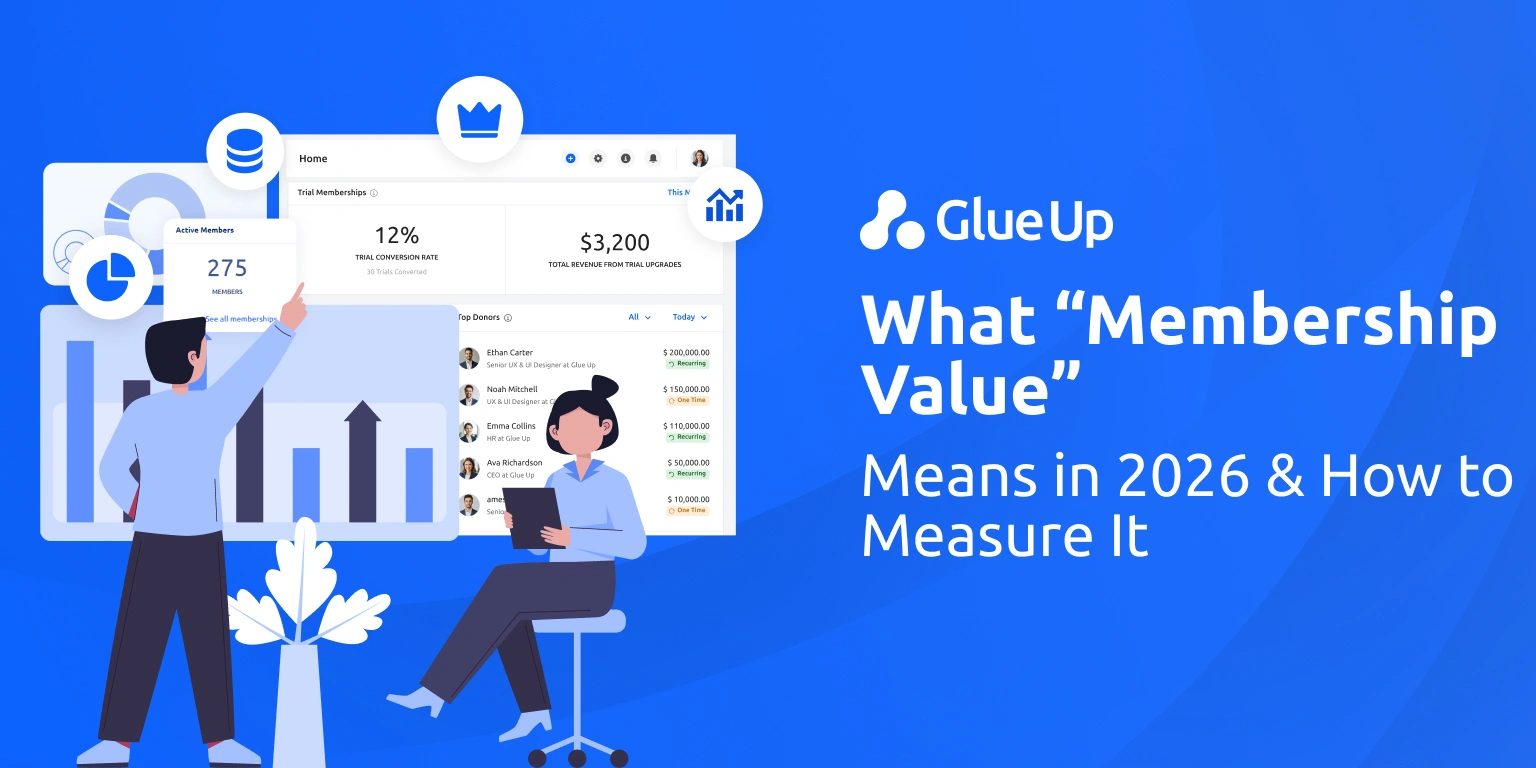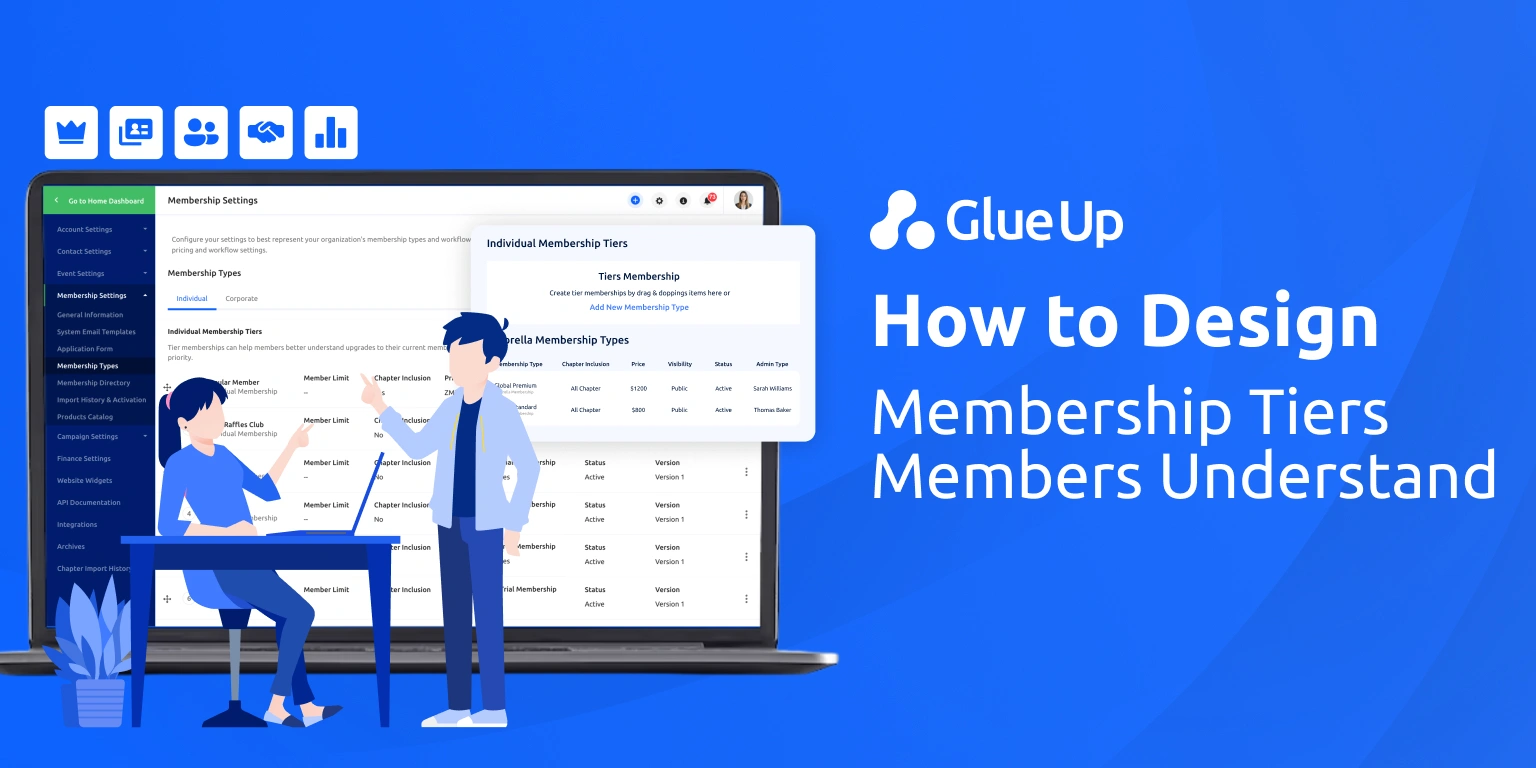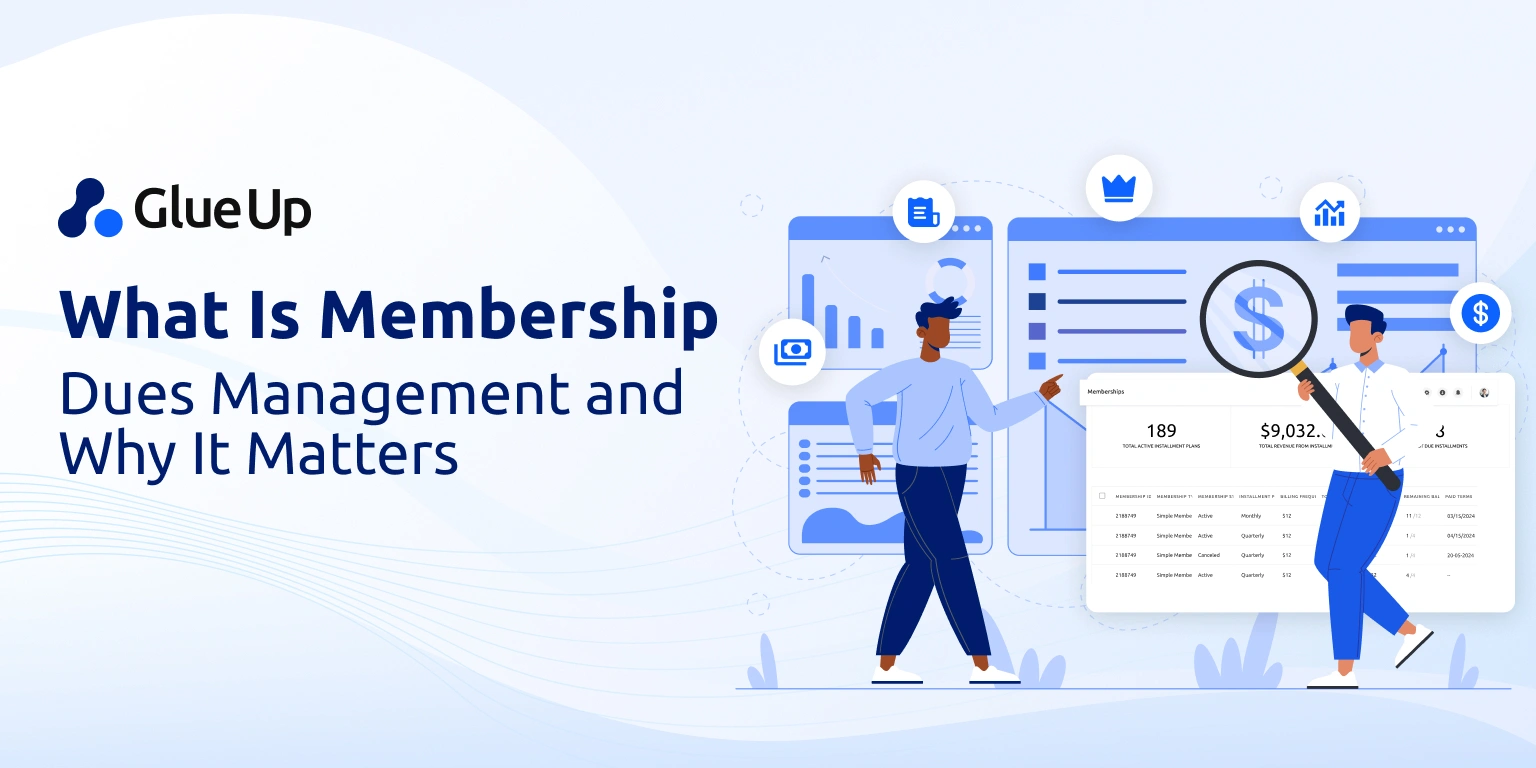
According to Capterra’s 2024 Tech Trends Survey, 41% of finance buyers say identifying software during the planning phase is difficult, and a similar number have concerns about security requirements.
The good news is there are many budgeting and forecasting solutions to meet the unique needs of associations, charities, unions, and other membership groups.
We've sorted through the market to bring you a curated list of the top 42 options, based on their features, user reviews, and value for money. As you read on, you'll find solutions that offer the clarity and control you need to make wise financial choices.
Let's help you match your organization's needs with the perfect software for your budget.
Key Takeaways
- Budgeting and forecasting software helps membership organizations plan for the future by estimating revenues and expenses.
- Top features include financial reporting, scenario planning, cash flow management, and integration with other systems.
- Budgeting software focuses on creating financial plans, while forecasting software predicts future financial performance.
- Cloud-based systems offer accessibility, while on-premise options allow for more customization.
- Leading solutions provide easy-to-use interfaces, automation, collaboration tools, and advanced analytics.
What is Budgeting and Forecasting Software?
Budgeting and forecasting software are advanced tools that assist membership organizations in planning for the future. They estimate potential revenues and expenses, thereby extending the capabilities of basic accounting software with added financial planning and analysis features.
Key points about these systems include
Budgeting software:
- It enables organizations to develop comprehensive financial plans and budgets.
- It allows users to simulate a variety of budget scenarios to prepare for possible contingencies.
Forecasting software:
- It employs statistical algorithms and models to predict future revenues and costs.
- These predictions are based on historical data and assumptions about future business conditions.
When combined, budgeting and forecasting systems offer membership organizations a more profound understanding of their financial situation. This understanding is crucial for making data-driven decisions about various aspects of the organization.
Thus, they help organizations in:
- Facilitating data-driven decision-making processes for new programs, staffing, investments, and dues pricing.
- Providing essential tools for effectively managing organizational growth and sustainability.
Quick Facts and Statistics on Budgeting and Forecasting Software
- The accounting and budgeting software market is expected to reach $33.11 billion in 2027 at a CAGR of 11.6%. (The Business Research Company).
- 72% of finance buyers plan to spend more on software for their business in the coming year than they did in 2023. (Capterra)
- 41% of finance buyers face security concerns as one of the key challenges when planning to invest in new software. (Capterra)
What’s the Difference Between Budgeting Software and Forecasting Software?
While both budgeting and forecasting software are integral components of financial planning, they serve distinct purposes and offer unique features.
| Budgeting Software | Forecasting Software | |
|---|---|---|
Primary Focus | Constructing financial plans for future fiscal periods | Anticipating future financial metrics such as revenues and costs |
Core Functionalities | Budget modeling, planning, and allocation | Predictive analytics and modeling |
| Budget review and approval workflows | Driver-based and what-if scenario modeling | |
| Reporting capabilities for performance tracking. | Visualizations of trends and patterns. | |
| Key Features | Creation and management of detailed financial plans | Use of historical data to predict future trends |
| Streamlined scrutinizing and sanctioning of budgets | Exploration of various potential outcomes | |
Comparison of budgeted figures against actual results | Integration with CRM and ERP for up-to-date forecasting | |
| Temporal Orientation | Retrospective – Reflects past decisions. | Prospective – Predicts future performance |
| Integration with Other Systems | Not specified in the text, but typically includes financial data | Includes CRM and ERP data for comprehensive forecasting |
| Usage in Decision- Making | Used for setting financial targets and resource allocation | Used for strategic planning and preparing for various scenarios |
Budgeting software primarily concentrates on constructing financial blueprints for future fiscal periods. Its core functionalities encompass:
- Budget modeling, planning, and allocation: This allows for the creation and management of detailed financial plans.
- Budget review and approval workflows: Streamline the process of scrutinizing and sanctioning budgets.
- Reporting capabilities: Enable the comparison of budgeted figures against actual results, facilitating performance tracking.
On the other hand, forecasting software utilizes statistical models to anticipate future financial metrics such as revenues and costs. Its key features include:
- Predictive analytics and modeling: These tools use historical data to predict future trends.
- Driver-based and what-if scenario modeling: This allows for the exploration of various potential outcomes based on different variables.
- Visualizations: These help in identifying and understanding forecasting trends and patterns.
- Integration with CRM and ERP data: This ensures that forecasts are based on comprehensive and up-to-date information.
While budgeting tends to be retrospective, providing a financial reflection of past decisions, forecasting is prospective, offering predictions for future financial performance.
Many leading solutions combine both budgeting and forecasting capabilities into a single integrated suite, providing organizations with a comprehensive financial planning tool.
Top Features to Look For in Forecasting and Budgeting Software
When considering forecasting and budgeting software, it's important to identify key features that can enhance your financial management, such as:
- Financial Reporting and Dashboards: This feature allows you to visually track budgets, actuals, and forecasts in real time through interactive reports and dashboards.
- Workflow Management: Automates budgeting and planning processes with configurable workflows and approvals.
- Modeling and Scenarios: Enables the creation of flexible what-if scenarios and models for forecasting revenues, expenses, capital expenditures, and more.
- Cash Flow Management: Manages cash inflows and outflows, optimizing cash position and liquidity.
- Collaboration: Centralizes plans and encourages collaboration through commentary, task management, and version control.
- Integration: allows seamless connection with ERP, CRM, HR, and other systems for data consolidation.
- Advanced Analytics: Leverages predictive analytics, machine learning, and AI to enhance forecast accuracy.
- Customization: Allows tailoring of budgeting and forecasting models to your organization's specific needs and processes.
- Ease-of-use: Ensures intuitive and customizable interfaces to enhance user adoption across the organization
Benefits of Budgeting and Forecasting Software for Member-Based Organizations
Budgeting and forecasting software offers several benefits to member-based organizations, including:
- Accurate Membership Forecasts: Allows for precise prediction of membership growth and attrition.
- Improved Dues Planning: Enables the modeling of different dues pricing and structures to optimize revenue.
- Program Spending Optimization: Allows budgeting and forecasting at the program level to manage costs.
- Insight into Revenue Streams: Provides forecasting of various non-dues revenue sources beyond membership.
- Cash Flow Visibility: Helps manage cash crunches and optimize investments.
- Scenario Modeling: Allows planning for different growth/decline scenarios.
- Data-driven Decisions: Quantifies the ROI of new programs or services.
- Automated Reporting: Eliminates manual processes with dynamic reports.
- Enhanced Collaboration: Aligns leadership around financial goals.
- Scalability: Adapts to growth by adding new programs, chapters, or business units.
Top 39 Budgeting and Forecasting Software for Membership Organizations
Nearly all finance buyers (98%) start off by creating a list of software vendors when they're looking to buy new tools.
They usually narrow it down to 3-5 choices based on what customers have to say, how the software ranks, and the information on the vendor's website.
To make your job easier, we've picked out the top 40 budgeting and forecasting software options for you. These tools lead the pack with their innovative features and robust functionality.
1. Xero
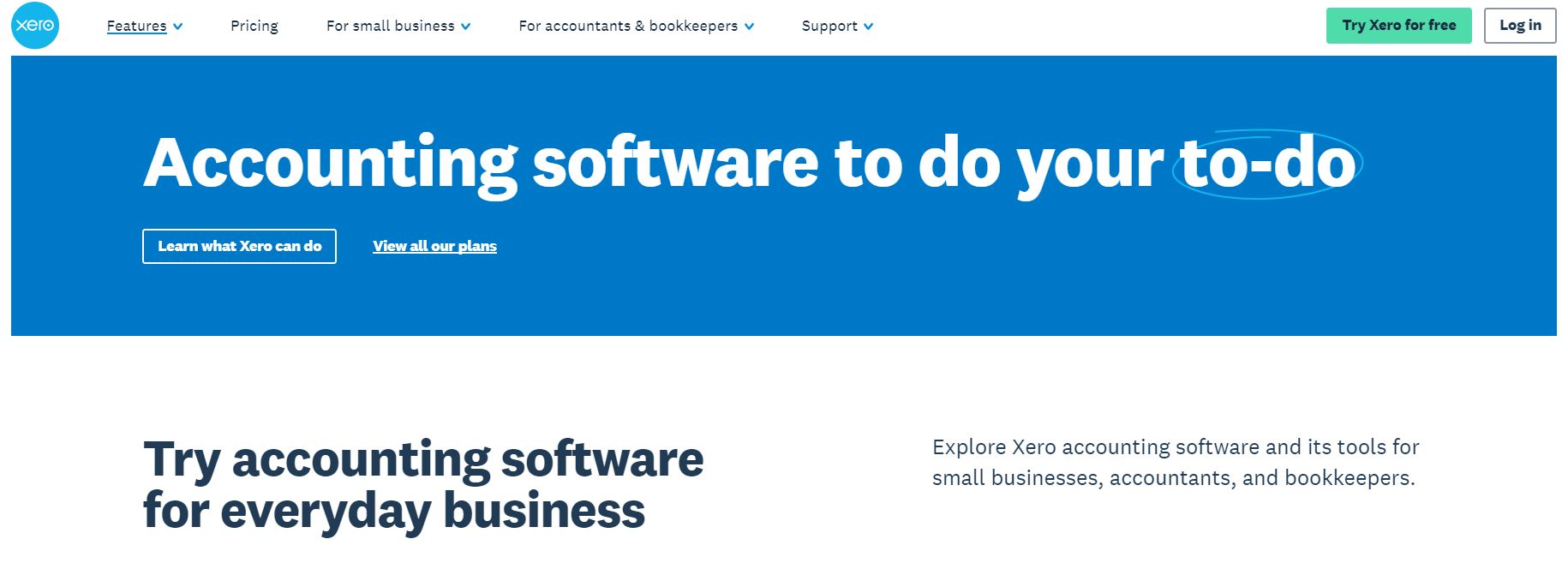
Xero offers budgeting and forecasting functionalities as part of its broader cloud-based accounting software and ecosystem. It provides tools to track cash flow, create budgets, forecast revenue, and compare scenarios.
The greatest advantage of using Xero is that it integrates with hundreds of third-party apps to bring data from across systems into its centralized platform. It offers customizable reporting dashboards that can be shared across teams or with advisors.
Xero also provides features like auto bank feeds, invoicing, bill payment, and expense management. Its budgeting and forecasting capabilities may be basic for some larger or more complex organizations. But for small businesses looking for an all-in-one accounting and financial management solution, Xero is a user-friendly choice.
Streamline Your Financial Management With Glue Up and Xero Integration
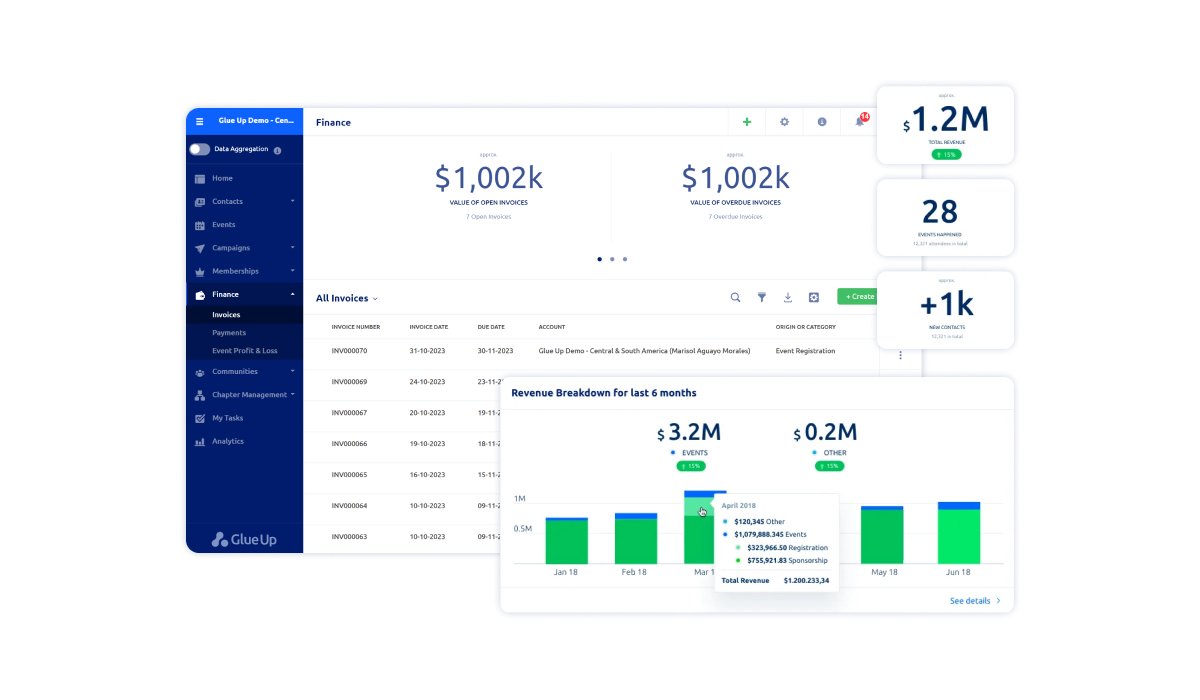
Budgeting and forecasting can often feel overwhelming, with each step presenting a new challenge in the form of data entry, invoice management, and financial reporting.
The integration between Glue Up’s membership management solution and Xero changes that all. It allows you to seamlessly share financial data between the two platforms.
This eliminates tedious manual data entry and provides real-time synchronization of invoices, revenue, expenses, etc.
With Glue Up and Xero integration, you can:
- Seamlessly share financial data between Glue Up's membership management solution and Xero.
- Eliminate tedious manual data entry and enable real-time synchronization of invoices, revenue, expenses, etc.
- Automate the synchronization of revenue from event registrations and membership fees from Glue Up into Xero, ensuring accurate and up-to-date revenue data for budgeting.
- Allow expenses from events and programs managed in Glue Up to flow into Xero, offering a complete view of costs.
- Provide the capability to break down revenue and expenses by event, offering detailed data for individual event budgeting.
- Utilize historical data in Xero to more reliably predict future budgets.
Overall, the integration takes advantage of the strengths of both platforms, eliminating manual processes and providing event managers with the accurate and real-time financial data needed for robust budgeting and forecasting.
2. Cube
Cube’s budgeting and forecasting software is specifically tailored to meet the needs of membership organizations such as associations, unions, charities, and clubs. It offers membership forecasting capabilities, enabling organizations to predict membership levels and adjust budgets accordingly.
Cube offers flexible modeling for various programs and initiatives, driver-based revenue planning linked to membership data, and insightful reporting. Its user-friendly interface integrates seamlessly with common data sources like CRMs and ERPs.
3. NetSuite
NetSuite's comprehensive cloud ERP system includes advanced budgeting, planning, and forecasting features. It allows organizations to create budgets and forecasts at various levels, including department, program, grant, or project.
The platform provides real-time visibility into performance variances through dashboards and reporting, making it an excellent choice for complex organizations requiring an integrated system.
4. Anaplan
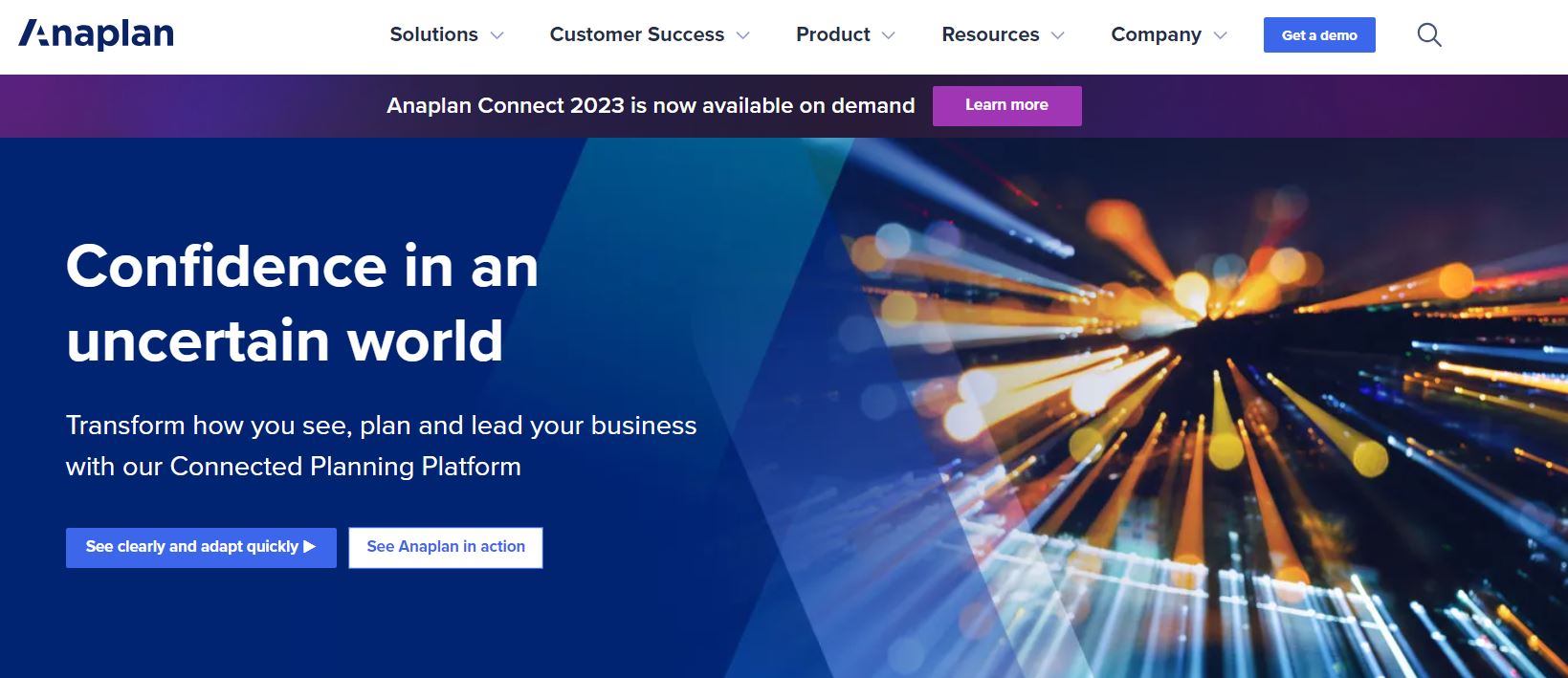
Anaplan is a top-tier planning and forecasting solution for large, complex organizations. It offers flexible modeling to capture organizational complexities and hierarchies and promotes collaborative planning across departments.
Anaplan's user-friendly interface integrates actual data to provide real-time visibility into performance trends, making it a scalable solution for large, global deployments.
5. Workday Adaptive Planning
As part of the Workday cloud ERP system, Workday Adaptive Planning unifies financial and operational planning. It leverages machine learning for intelligent forecasting and promotes collaborative, continuous planning across the organization.
The software offers flexible modeling and scenario planning capabilities and integrates fully with other Workday modules.
6. BOARD
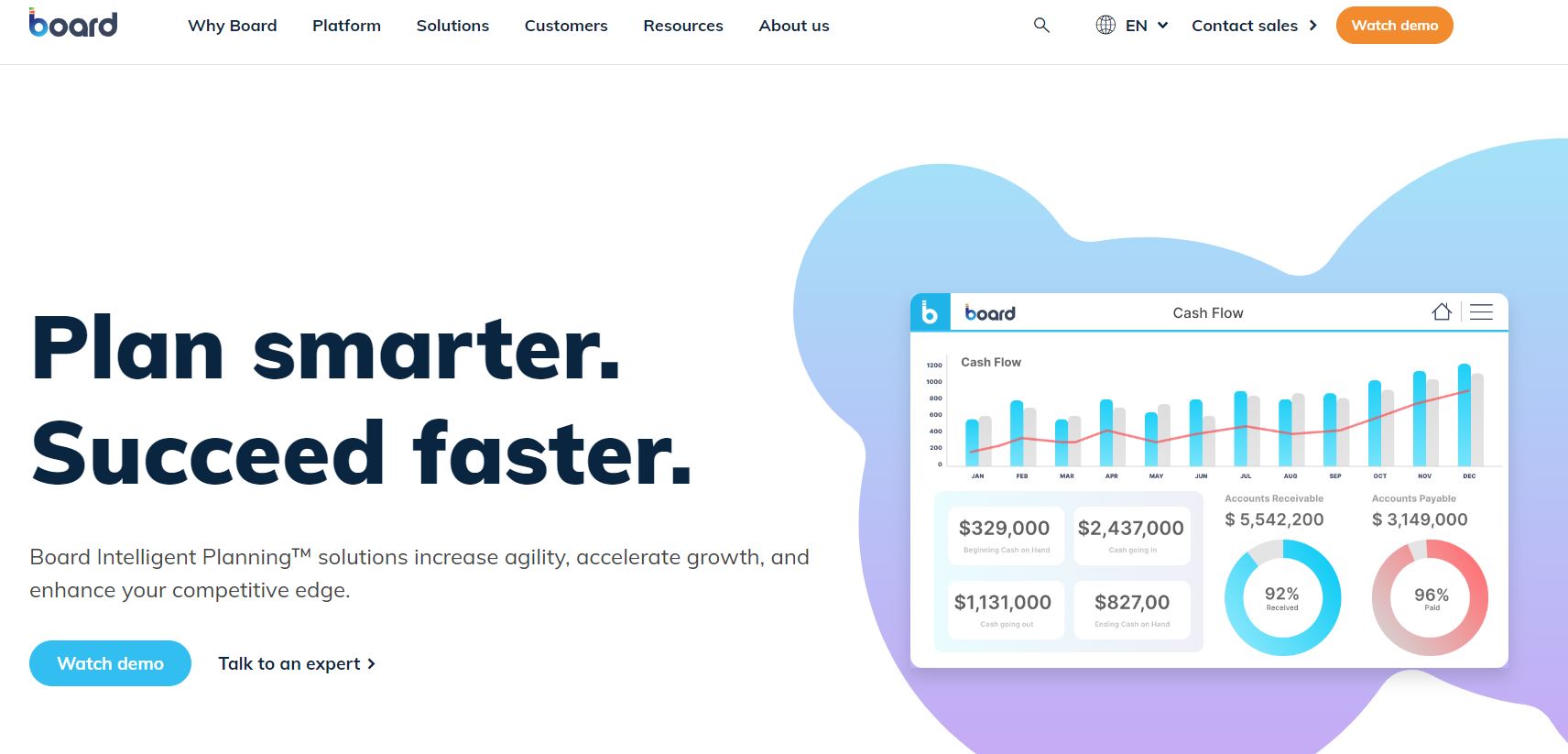
BOARD's planning and forecasting solution is specifically tailored for membership organizations. It offers membership forecasting capabilities that integrate with CRM data and enable long-range strategic planning.
The software is designed to align organizational goals across departments and programs, and its customizable dashboards provide visibility into key performance metrics. It is built for ease of use by non-technical business professionals.
7. IBM Planning Analytics
If you’re looking for flexible budgeting and forecasting software, IBM Planning Analytics is the solution for you. It leverages AI and machine learning to provide automated forecasts and actionable insights.
The platform offers driver-based modeling for detailed what-if analysis and scenario planning. The self-service analytics and interactive dashboards enable users across the organization to easily visualize data and collaborate.
IBM Planning Analytics is highly customizable and can scale to support large, complex global organizations. Its in-memory engine provides rapid calculations for modeling and analytics.
8. Oracle Essbase
Oracle Essbase is an on-premise, multidimensional database and calculation engine optimized for finance and other analytical applications. It enables multidimensional data modeling which is ideal for performing slicing and dicing analysis and creating advanced analytic calculations.
The software makes it easy to load data from multiple sources and create aggregated views for reporting and analytics. The in-memory architecture delivers fast query response times for analyzing large data volumes.
You can create personalized worksheets and dashboards to perform what-if scenarios, forecasts, and variance analysis. Also, the collaborative interface allows commentary, annotations, and version control.
9. Oracle Hyperion Planning
Another top flexible, on-premise solution is Oracle Hyperion Planning software designed for corporate planning and budgeting. It provides a centralized platform for financial planning, forecasting, and modeling. Its web-based interface offers spreadsheet-like forms for data entry and reporting. It also supports driver-based modeling, allocations, and workflow approval processes.
The software also enables rolling forecasts, profitability modeling, workforce planning, and other advanced analytics. You can link its financial and operational data for consolidated reporting. It can also be scaled to support large global enterprises with multiple entities, currencies, and charts of accounts.
10. PlanGuru
PlanGuru is an ideal budgeting and forecasting tool designed for small to mid-sized organizations. It offers an intuitive web-based interface that allows users to easily create budgets and forecasts quickly with flexible, customizable templates.
The software automatically aggregates data and provides interactive dashboards for analyzing financials. Also, the system generates variance analysis reports to track budget vs. actuals.
What's great about PlanGuru is that it integrates with common accounting systems and Excel for seamless data import and reporting. The cloud-based solution is also affordable for small businesses but scales to support larger planning needs.
11. Centage Planning Maestro
Centage Planning Maestro is a cloud-based financial planning and analysis platform designed for the needs of small to mid-sized organizations. It provides an easy-to-use interface for building budgets, forecasts, and financial models.
Its key features include automated allocations, driver-based modeling, rolling forecasts, variance analysis, revenue planning, workforce planning, and consolidated reporting.
The software has pre-built integrations with popular ERP and accounting systems. Its cloud delivery model provides a quick implementation. Also, with role-based access, you can collaborate across the organization and drill down to analyze data.
12. Planful
Planful (formerly known as Host Analytics) is another flexible, cloud-based solution suitable for mid-market organizations. It provides capabilities for financial consolidation, reporting, budgeting, and forecasting.
Planful aims to streamline financial processes with its intuitive interface, built-in financial intelligence, and automated workflows. You can integrate it with commonly used ERPs and CRMs to connect data across systems. It also offers role-based permissions, audit trails, and data transparency to support collaboration.
It has recently included AI-driven insights, cash flow planning, and predictive analytics to make budgeting more effective. Overall, Planful is a strong choice for FP&A among mid-sized companies looking for an integrated, cloud-based performance management solution.
13. Prophix
Prophix is a unified Corporate Performance Management software suite aimed at mid-market and large organizations. Its modules cover financial reporting, budgeting, forecasting, consolidation, and analytics.
Prophix aims to unify financial data and processes within a single cloud platform. It focuses on ease of use with drag-and-drop workflows, built-in best practices, and an Excel-like interface.
It offers extensive capabilities like driver-based modeling, rolling forecasts, variance analysis, and cash flow planning. Prophix also integrates with ERPs like NetSuite, SAP, and Oracle.
For organizations seeking an integrated financial performance management solution, Prophix is a flexible cloud option with strong FP&A capabilities.
14. Vena Solutions
Vena offers an integrated suite of budgeting, forecasting, reporting, and analytics tools within its cloud-based FP&A platform. It combines Excel-like ease of use with enterprise-grade functionality for advanced modeling and analysis.
Vena enables connections to 100+ data sources to bring together financial and operational data. It provides centralized reporting dashboards with drill-down analytics. Its budgeting features include driver-based modeling, workflow approvals, version control, and audit trails. It also offers rolling forecasts, variance analysis, cash flow management, and scenario comparisons.
The software aims to streamline financial planning and extend FP&A capabilities across the organization. With strong capabilities across budgeting, forecasting, reporting, and analytics, it's a solid choice for FP&A in mid-market and large enterprises.
15. Datarails
Being a cloud-based FP&A platform, Datarails combines real-time reporting, budgeting and forecasting, analytics, and data integration. It brings together data from multiple sources including ERPs, CRMs, HRIS systems, and custom applications.
The software offers Excel-based budgeting and forecasting workflows with top-down and bottom-up modeling capabilities. With its focus on real-time data and analytics, Datarails can support more agile and insightful financial planning, particularly for data-driven organizations.
16. Jirav
Jirav offers flexible and easy-to-use budgeting and forecasting software for businesses of all sizes. Its key features include customizable dashboards, robust modeling capabilities, and seamless integration with ERPs and other data sources.
With Jirav, you can make your budgeting process collaborative yet controlled. The self-service interface allows different departments to submit budgets while finance maintains alignment with targets.
Jirav also offers advanced analytics and reporting to provide insights into performance.
17. Solver
Solver provides Excel-based budgeting and forecasting software with an emphasis on ease of use and speed of implementation.
With Solver, you can build budgets bottom-up from individual line items or top-down using drivers and assumptions. Its built-in financial intelligence enables dynamic models that update forecasts when assumptions change.
Solver also includes customizable dashboards, audit trails, and workflow automation. The software is well-suited for small to mid-sized organizations looking for a simple but powerful forecasting tool.
18. Budgyt
Budgyt offers an intuitive cloud-based budgeting and forecasting solution tailored for small businesses and startups. It aims to make the budgeting process easy and automated.
Budgyt syncs with accounting software and bank accounts to auto-categorize transactions. You can set budgets for each category and track performance versus plans. Its cash flow forecast helps anticipate highs and lows.
The platform also provides various financial reports and allows budgets to be adjusted on the fly. Thus, it is designed for non-accounting users with easy setup and navigation.
19. OnPlan
OnPlan provides a straightforward online platform for budgeting, forecasting, reporting, and analytics. It combines planning, analysis, and visualization in one simple package.
Similar to Solver, OnPlan also enables top-down and bottom-up budgeting with driver-based models. Also, its built-in templates allow quick creation of budgets, forecasts, and dashboards.
OnPlan’s collaboration features include commentary, task management, and version control. Plus, it automatically aggregates data from spreadsheets and other sources for consolidated reporting.
20. Sage Intacct
Sage Intacct stands out with its advanced budgeting and planning capabilities, forming an integral part of its comprehensive cloud financial management system. It offers a flexible modeling engine that supports both top-down and bottom-up budgeting, customized to fit the unique structure of any organization.
The system simplifies the budgeting process through the use of templates, workflows, and controls. It leverages the power of its underlying GL database to drive reporting and analytics, delivering real-time results analysis.
Sage Intacct's continuous monitoring of budgets versus actuals allows for timely forecast adjustments. It also offers extensive drill-down capabilities for detailed analysis.
The system promotes collaborative planning across departments and allows to run what-if scenarios. Its budgeting module is particularly effective for complex organizations.
21. Mosaic Tech
Mosaic Planning helps membership organizations address their unique planning challenges through budgeting and forecasting software.
Mosaic supports both organization-level and project-based budgeting, offering customizable hierarchies and models. It also provides scenario-based tools to help evaluate strategic options.
In addition to this, Mosaic includes tools for staff planning and human capital budgeting. Its robust analytics and reporting capabilities offer valuable insights into an organization's financial health.
The software seamlessly integrates with commonly used nonprofit accounting systems, making it a comprehensive solution tailored to the needs of nonprofits and associations of all sizes.
22. Causal
Causal is an AI-driven software that combines advanced forecasting capabilities with flexible budgeting tools. It uses machine learning algorithms to generate accurate forecasts based on historical data.
Causal also allows users to build driver-based models to understand how key business metrics impact financial performance. Some key features include demand planning, workforce planning, revenue forecasting, and scenario modeling.
The software integrates well with commonly used data sources like Excel, SQL databases, and business intelligence tools. Thus, Causall is a good choice for medium to large businesses looking for an all-in-one forecasting and budgeting solution.
23. LiveFlow
LiveFlow is a cloud-based cash flow forecasting and management system designed for finance teams. It automatically compiles data from accounting, sales, HR, and other systems to generate cash flow forecasts.
You can collaborate on forecasts, track receivables, manage payables, and monitor cash balances. LiveFlow uses machine learning to improve forecast accuracy over time. Among its most notable features are customizable dashboards, workflow automation, cash flow API, and mobile access.
LiveFlow integrates seamlessly with popular accounting platforms, making it an ideal solution for high-growth companies that need to optimize cash flow.
24. Vena
Vena Solutions offers a robust FP&A platform that handles budgeting, forecasting, reporting, and analytics. It is tailored for mid-market to enterprise-level businesses.
Vena leverages a spreadsheet interface combined with cloud computing to provide a powerful yet easy-to-use solution. It helps finance teams automate budgeting and planning processes. You can build models, generate reports, analyze data, and collaborate across the organization.
25. Cash Flow Frog
Cash Flow Frog is a financial planning tool that assists businesses in managing their cash flow and making accurate forecasts. Its primary goal is to offer businesses a transparent, up-to-the-minute snapshot of their financial status, thereby facilitating informed decision-making.
Among its key features are cash flow forecasting, budgeting, scenario analysis, and financial reporting. The software is compatible with widely-used accounting software, enabling users to seamlessly import and synchronize their financial data. Its user-friendly interface and visual dashboards simplify the process of interpreting cash flow data.
Cash Flow Frog presents itself as an all-inclusive solution for cash flow management, aiding businesses in planning, tracking, and maximizing their financial assets.
26. SAP Business Planning and Consolidation (BPC)
SAP BPC enables organizations to streamline financial planning, budgeting, forecasting, and consolidation on a single integrated platform. It helps automate and standardize end-to-end FP&A processes.
The software also provides a unified view of finances across multiple business units, products, and channels. Its core functionalities include long-range planning, cash flow planning, workforce planning, and consolidated financial reporting.
SAP BPC also offers built-in financial intelligence, advanced modeling, and customization flexibility. It comes with pre-packaged integration to SAP ERP and other data sources and is commonly used by large enterprises.
27. Syft Analytics
Syft Analytics is a cloud-based financial reporting and analytics platform designed for businesses of all sizes. It aims to simplify financial data analysis and provide actionable insights for better decision-making.
It also integrates with popular accounting systems, enabling users to pull data directly from their existing financial systems. The software offers pre-built templates and customizable dashboards to help users analyze their financial data more effectively.
Syft Analytics positions itself as a user-friendly, powerful tool for financial analysis, helping businesses to understand their financial position and make informed decisions.
28. OneStream
OneStream offers a comprehensive corporate performance management platform, unifying financial consolidation, reporting, planning, and analytics within a single cloud-based system.
It integrates guided workflows and inherent financial intelligence, streamlining processes and reducing the IT burden. With its deep functionality, it caters well to mid-sized to large companies, making it a compelling choice for membership organizations seeking an integrated CPM solution.
29. G-Accon
G-Accon presents a robust, on-premise performance management suite, excelling in budgeting, forecasting, and reporting. It features detailed workflow and audit trail functionalities, catering to complex organizational structures and requirements.
With its ability to integrate with major ERP platforms and consolidate data across systems, G-Accon is well-suited for large, complex membership organizations requiring sophisticated financial planning capabilities.
30. Abacum
Abacum emphasizes usability, flexibility, and speed in its financial planning software. It employs an Excel-like interface, encouraging adoption across organizations of varying sizes. Abacum supports customized reporting dashboards, driver-based modeling, and scalability, catering to businesses from small to large.
Designed for rapid implementation and user-friendly operation by finance teams, Abacum is an ideal choice for membership organizations that prioritize an intuitive, flexible planning system.
31. Pigment
Pigment offers an affordable, user-friendly SaaS solution, tailored to meet the budgeting and forecasting requirements of mid-market companies. It facilitates flexible modeling with effortless Excel integration and allows for model and workflow configuration based on your unique processes.
Pigment ensures role-based permissions, comprehensive auditability, and the capacity to link financial drivers to operating conditions. With its highly customizable and intuitive interface, Pigment provides a robust budgeting and forecasting system, making it an ideal choice for midsized membership organizations.
32. Workiva
Workiva presents a potent cloud-based platform, meticulously designed for financial reporting, planning, and data analysis. Its seamless integration with existing ERP and financial systems allows for data consolidation into a single, reliable source.
Workiva's advanced reporting and analytics capabilities include customizable dashboards, ad-hoc analysis, and machine learning for accurate forecasting. Catering to the needs of large, complex global enterprises and public companies, Workiva stands as a preferred choice for substantial membership organizations.
33. CCH Tagetik
CCH Tagetik is a comprehensive corporate performance management solution, designed specifically for large enterprises. It provides a unified platform for financial and operational planning, offering features such as financial close, consolidation, planning, reporting, and analytics.
The software is scalable, capable of handling the complexities of global companies, and offers onsite installation and configuration services.
34. Spendesk
Spendesk is a spend management platform that provides finance teams with visibility and control over expenditures. It streamlines processes and offers real-time insights into spending, integrating with accounting systems and automating approval workflows.
Spendesk is designed for mid-market and enterprise businesses, offering tools for budgeting, forecasting, and reporting.
35. Clockwork
Clockwork is a budgeting and forecasting application designed for small and midsize businesses. It offers an intuitive, lightweight tool for finance teams, providing capabilities for both departmental-level and organization-wide budgeting and forecasting.
Clockwork integrates with common accounting platforms and provides reporting and analytics around budgets versus actuals.
36. Vareto
Vareto provides AI-powered forecasting and budgeting software, with an emphasis on user-friendliness and speed. It aims to replace spreadsheet-based processes with real-time visibility into financial performance, leveraging machine learning and predictive algorithms for forecasting and modeling.
Vareto is targeted at mid-market to large enterprises seeking faster, smarter financial planning and analysis.
37. Martus
Martus offers a suite of budgeting, forecasting, and scenario planning solutions tailored for mission-driven organizations, including extensive capabilities like financial control, visibility, and strategic insights.
The software addresses the unique budgeting needs of nonprofits, offering features like fund accounting, project-based budgeting, grant budgeting, multi-scenario modeling, and cash flow forecasting.
38. Phocas Software
Phocas Software is a specialist in providing budgeting, forecasting, and financial reporting solutions. Its self-service BI platform simplifies data analysis, offering insights for improved decision-making.
Phocas offers both cloud-based and on-premises deployment options, integrating with common ERPs and accounting systems.
39. Accounting Seed
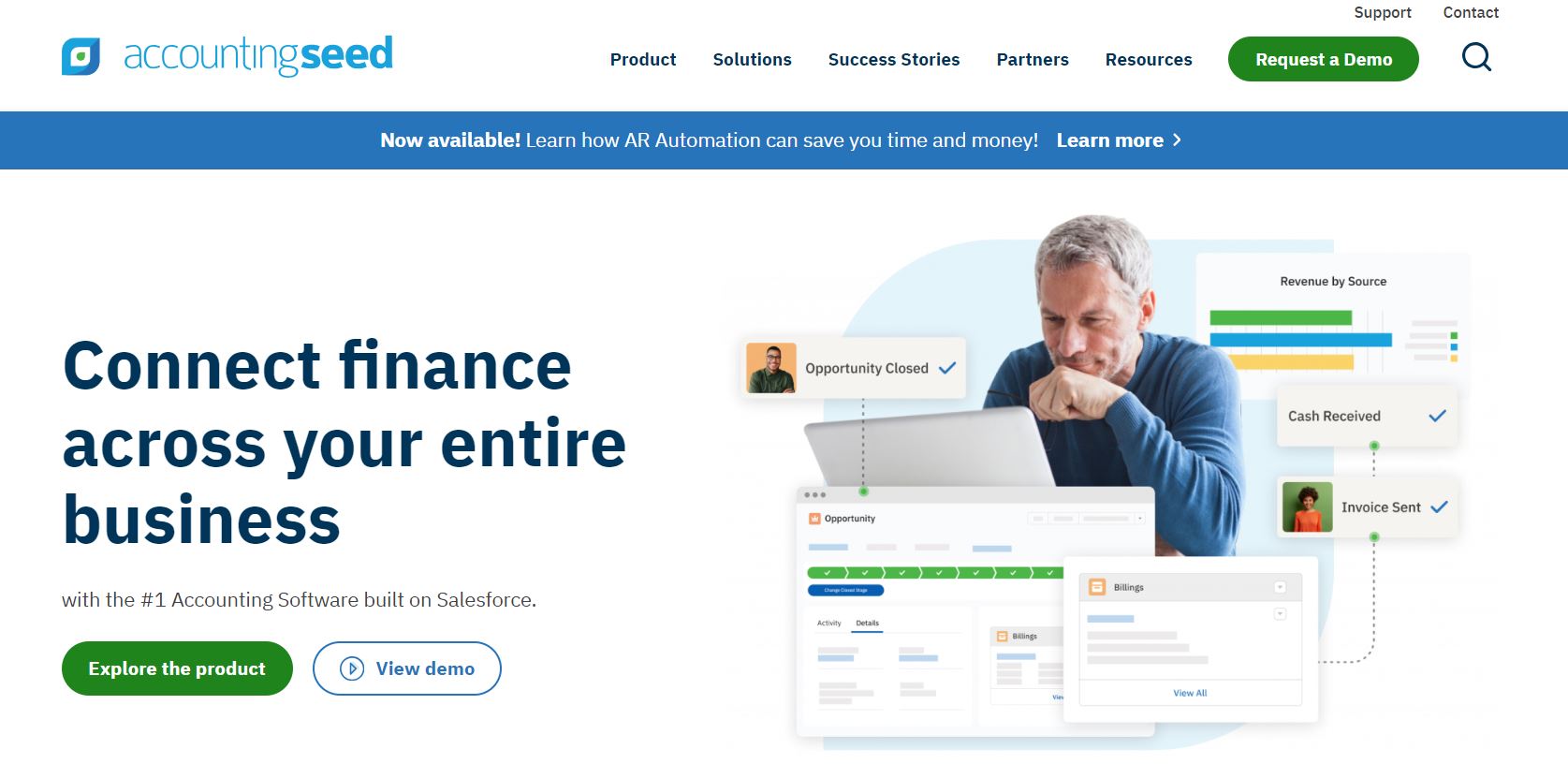
Accounting Seed is another cloud-based accounting and financial management platform for membership-based organizations. It aims to streamline accounting processes while providing real-time financial insights.
The software integrates seamlessly with common nonprofit systems and workflow while ensuring ease of use and customization. It presents itself as a modern accounting solution, tailored to meet the unique needs of mission-driven organizations.
Free Budgeting and Forecasting Software for Membership Organizations
Personal finance software of a smaller scale can assist you in creating and managing budgets, as well as performing predictions.
However, it's important to note that free software often lacks features like multi-scenario analysis and automated reporting.
1. YNAB (You Need a Budget)
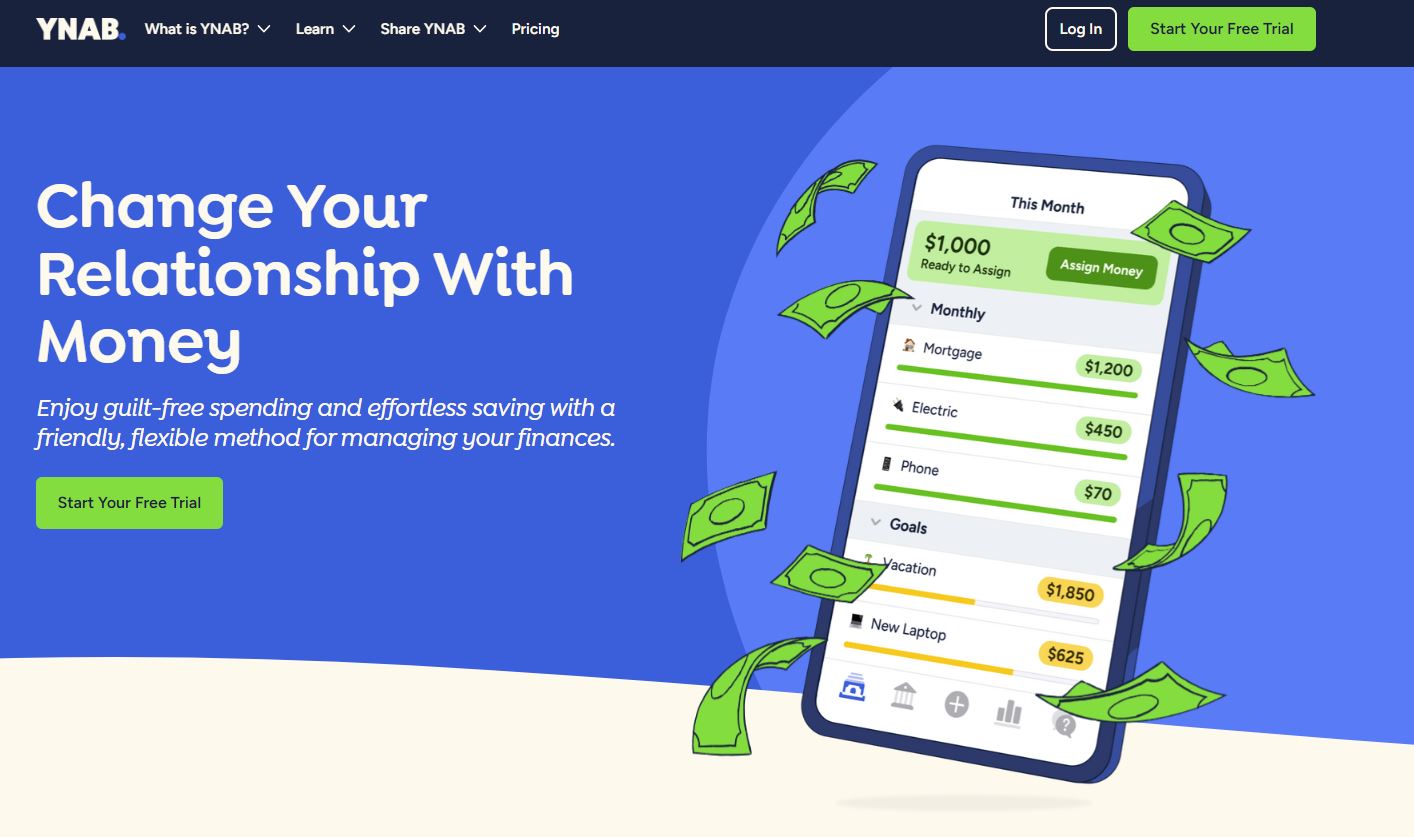
YNAB offers an easy-to-use budgeting application for personal finances that can also support simple business budgeting needs for small teams.
It has a clean and intuitive interface that allows users to set budgets, categorize expenses, and track spending over time. The free version includes the key features needed for basic budget management like income/expense tracking, reporting, and automatic syncing across devices.
While the free version has limited collaboration features, it can be a good option for sole proprietors or very small teams that need a straightforward way to monitor their finances.
2. Mint by Intuit
Mint provides a well-known free online personal finance app that can be used for basic business budgeting as well. It offers features like transaction categorization, customizable budgets, and goals, spending charts/trends, and alerts when you go over budget. Mint also automatically imports and categorizes transactions from linked financial accounts.
However, Mint lacks some more advanced budgeting features like forecasting, team collaboration, and integration with accounting software. But overall it's a solid free option for basic business money management.
3. Google Sheets
Google Sheets, part of the free Google Workspace suite, provides a versatile spreadsheet tool that can support simple budgeting and forecasting needs.
While it doesn't offer pre-built budgeting features, Google Sheets allows you to customize spreadsheets for tracking income/expenses, visualizing spending trends over time, and forecasting future cash flow.
You can also use Sheets for things like managing membership data. The collaborative nature of Sheets makes it easy for small teams to share and update budgets. However, it does require manually entering all data. But it’s a free, flexible way to handle simple membership organization budgeting.
As we've explored, having the right technology in place is critical for membership organizations to gain insights, predict trends, and make strategic decisions.
A complete solution like GlueUp and Xero delivers the features required for sustainable growth and impact. To see how these platforms can work for your organization, be sure to schedule a demo today and find the best fit to achieve your budgeting and forecasting goals.

